Bad data enterprise asset management creates serious problems for your organization. Gartner reports that poor data quality results in annual losses between $12.9 million and $15 million. You may encounter several types of bad data:
- Incorrect data leads to mistakes in planning.
- Lack of uniformity causes inconsistent results.
- Falsified tagging complicates asset tracking.
- Absence of a standard authority results in discrepancies.
These issues drive financial losses, disrupt operations, and increase compliance risks.
Bad Data Enterprise Asset Management Impact

Downtime and Productivity Loss
Bad data enterprise asset management systems create major obstacles for your operations. Incomplete, inaccurate, or outdated data makes it impossible for you to track asset health and anticipate failures. You lose visibility into critical equipment conditions, which leads to unexpected breakdowns and costly downtime.
The absence of sensors to track key health indicators means you are flying blind. You have no way of knowing that a component is degrading until it fails.
Poor asset management practices often result in frequent equipment breakdowns. These disruptions affect your production schedules and reduce overall output. Customer satisfaction drops when you cannot deliver on time. In manufacturing environments, you may see these problems every day:
- Inadequate maintenance strategies arise from bad data, leading to increased maintenance costs.
- Lack of visibility into asset conditions prevents timely interventions, causing unexpected failures.
- Inefficient work order management due to poor data results in delays and miscommunication.
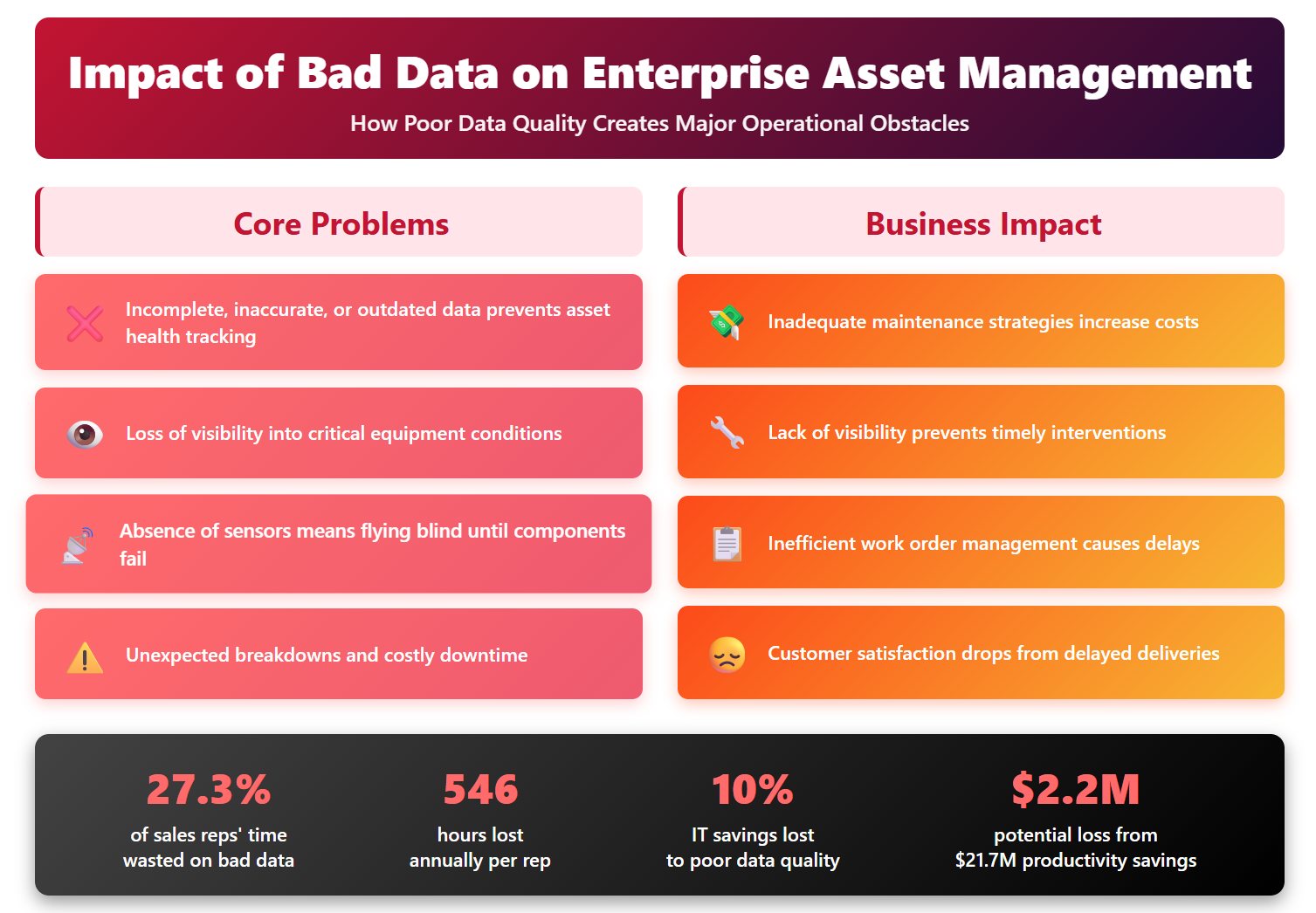
You spend valuable hours correcting errors and reconciling records. Teams lose focus on strategic planning and growth initiatives. Sales representatives in the U.S. reportedly spend around 27.3% of their time dealing with inaccurate or incomplete data, resulting in a loss of 546 hours annually. Poor data quality can lead to a loss of about 10% of the savings from IT initiatives, which translates to a potential loss of $2.2 million from a $21.7 million labor productivity savings.
Financial and Compliance Risks
Bad data enterprise asset management systems expose you to significant financial and regulatory risks. When your asset records are inaccurate or improperly stored, you face the threat of non-compliance with major regulations like GDPR, HIPAA Security Rule, CCPA, or SOX. Legal actions and penalties can damage your brand reputation and drain your resources.
- Poor data quality can lead to violations of data privacy regulations such as GDPR and HIPAA, exposing businesses to legal actions or penalties.
- Inaccurate or improperly stored data increases the risk of non-compliance with major regulations.
- Damage to brand reputation, penalties, and lawsuits are significant financial implications of poor data quality.
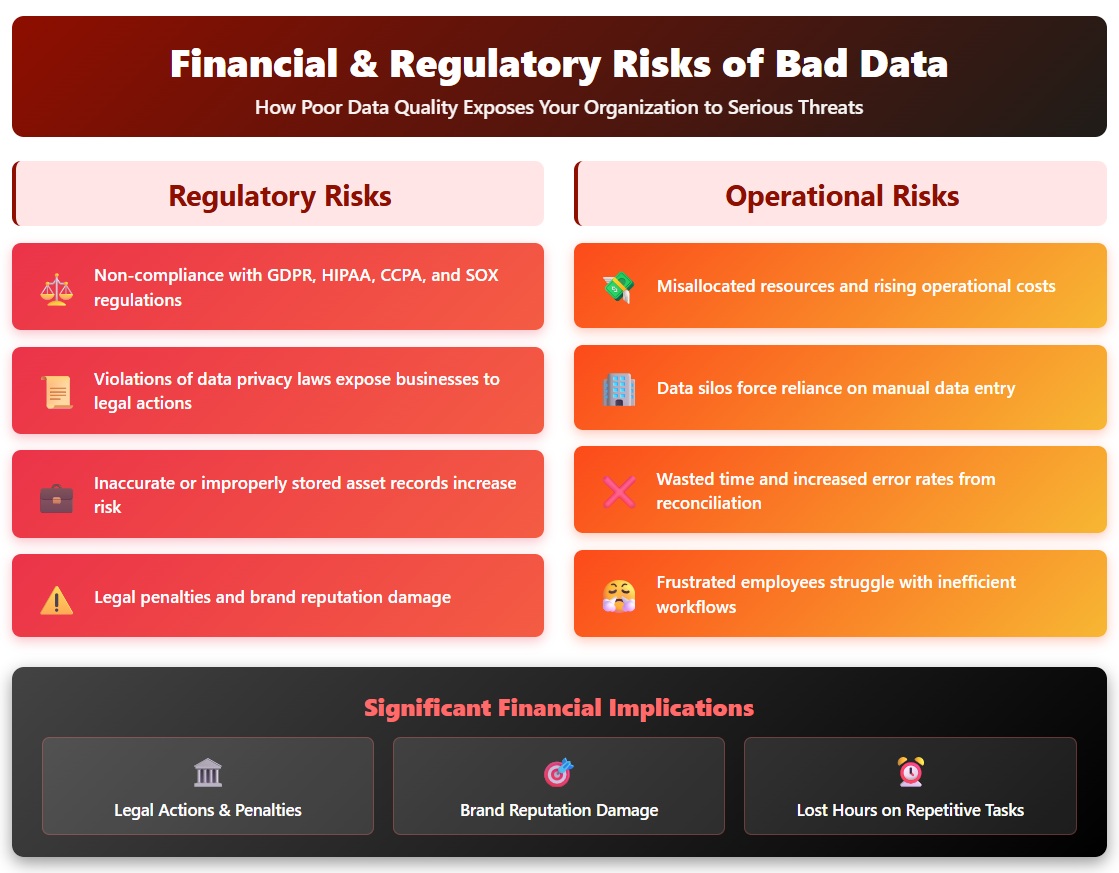
You may also see resources misallocated and operational costs rise. Data silos force your teams to rely on manual data entry and reconciliation, which wastes time and increases error rates. Frustrated employees struggle with inefficient workflows, and your organization loses valuable hours on repetitive tasks that could be automated.
Poor Maintenance Planning
Bad data enterprise asset management systems undermine your ability to plan and execute maintenance effectively. Incomplete maintenance records make it difficult for you to estimate costs, schedule tasks, and manage spare parts. Technicians arrive without the necessary tools or parts, causing delays and increasing the risk of critical errors.
- Lack of good decision-making around maintenance strategy
- Ineffective execution of maintenance tasks
- Poor spares management
- Decisions based on incomplete and outdated information
- Increased operational costs
- Missed opportunities for effective maintenance partnerships
- Inefficiencies in maintenance operations
- Increased downtime
- Potential safety risks
- Difficulty in estimating maintenance and repair costs
- Time-consuming tasks for maintenance technicians
- Increased risk of critical errors
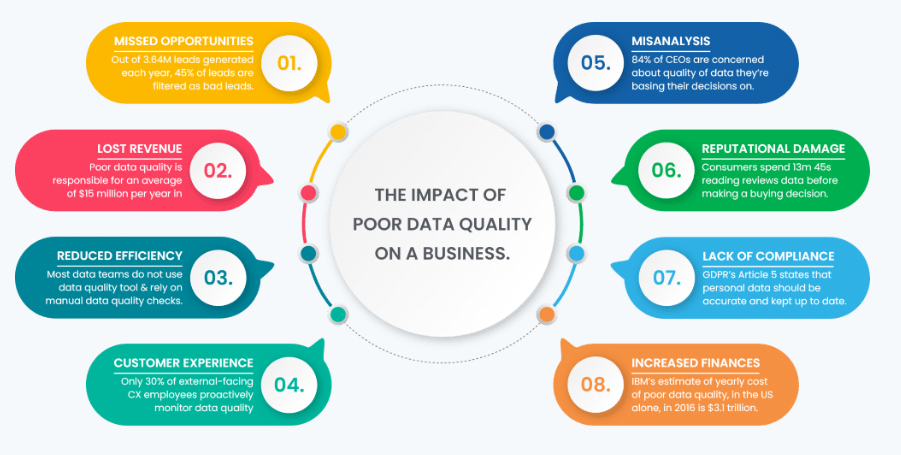
Scheduling tasks on the wrong cadence can result in either over-maintenance or under-maintenance, which affects equipment reliability. Inadequate record-keeping prevents planners from optimizing maintenance schedules, leading to inefficient use of technician time. Poor master data practices decrease asset reliability, increase costs, and create safety compliance issues. You face challenges in performance tracking and longer training periods for new staff.
Bad data enterprise asset management systems create strategic blind spots. You cannot make informed decisions, and your organization misses opportunities for improvement. Operational inefficiencies, compliance risks, and maintenance failures all stem from poor data quality.
Hidden Costs and Operational Challenges Caused By Bad Data Enterprise Asset Management
Asset Loss and Misallocation
You face hidden costs when assets go missing or end up in the wrong place. Poor data quality can lead to misallocation of resources, such as assigning equipment to the wrong projects. This wastes both time and money. When you cannot track assets in real time, you may purchase replacements unnecessarily, increasing expenses.
- Mismanaged assets often result from a lack of accurate tracking.
- Wasted resources and lost profits occur when you assign assets incorrectly.
- Operational efficiency drops as teams spend extra hours searching for missing items.
Legal and regulatory exposure also increases when you fail to manage asset disposal or license compliance, which can result in penalties.
Increased Maintenance Expenses
Reactive maintenance becomes the norm when you rely on bad data enterprise asset management. You may only discover equipment issues after a breakdown, leading to unplanned downtime and missed deadlines. This approach drives up costs and reduces cash flow.
Organizations often see:
- Higher maintenance costs due to last-minute repairs.
- Increased energy consumption as failing equipment works harder.
- More frequent safety incidents during rushed fixes.
Unplanned downtime also leads to lost production and wasted materials. Over time, these hidden costs add up, affecting your bottom line.
| Hidden Costs | Description |
|---|---|
| Wasted Resources | Inefficient use of time and materials due to poor asset management practices. |
| Operational Inefficiencies | Increased time spent on locating and managing assets, leading to delays. |
| Lost Revenue Opportunities | Missed chances for profit due to ineffective asset utilization. |
Strategic Blind Spots
Bad data enterprise asset management creates strategic blind spots that hinder your long-term planning. Incomplete or inaccurate data makes it difficult to make informed decisions about investments and resource allocation.
- Poor data governance can lead to incorrect investment choices.
- Executives may rely on informal discussions instead of accurate reports, missing key opportunities.
- Data silos and lack of system integration prevent you from optimizing asset performance.
You may also struggle to evaluate the effectiveness of your asset management strategies. This lack of transparency can result in overly cautious decisions and missed revenue opportunities. As the volume of data grows, managing its quality becomes even more critical for operational efficiency and strategic success.
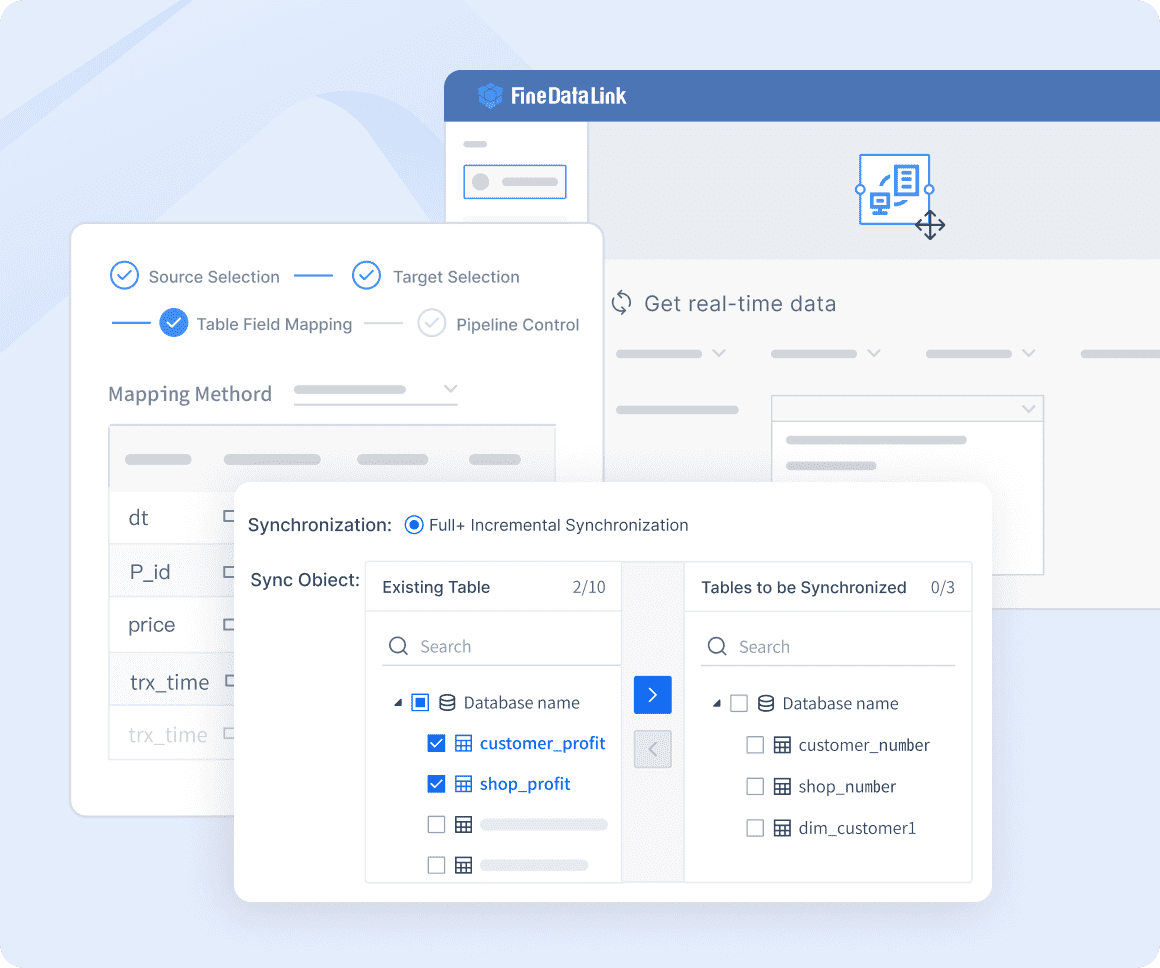
Solutions for Data Quality To Solve Bad Data Enterprise Asset Management Issues

FineDataLink Data Integration
You need a robust solution to overcome the challenges of bad data enterprise asset management. FineDataLink offers a modern data integration platform designed for real-time synchronization, advanced ETL and ELT, and rapid API connectivity. This platform helps you eliminate data silos and automate data flows, which improves the quality and reliability of your asset data. FineDataLink stands out because it supports integration from multiple sources, ensures data consistency, and automates synchronization so your reports and dashboards always reflect the latest information.
| Feature | Description |
|---|---|
| Low-Code Platform | Simplifies complex data integration processes, enhancing user-friendliness. |
| Real-Time Data Synchronization | Provides minimal latency in real-time data synchronization, crucial for asset management. |
| Advanced ETL & ELT Development | Facilitates efficient operations through advanced data transformation capabilities. |
| API Integration | Allows for rapid API development in just 5 minutes, improving data sharing between systems. |
| Drag-and-Drop Functionality | Offers an intuitive interface that significantly increases development efficiency. |
| Detailed Documentation | Extensive resources ensure users can easily master the platform's functionalities. |
| Affordable Pricing | Provides cost-effective solutions that outperform competitors. |
| Project Delivery Expertise | Successfully delivered over 1000 data projects, showcasing reliability and expertise. |
FineDataLink enables you to integrate data from various sources, maintain consistency, and transform data seamlessly. These capabilities help you address the root causes of bad data enterprise asset management and support better decision-making.
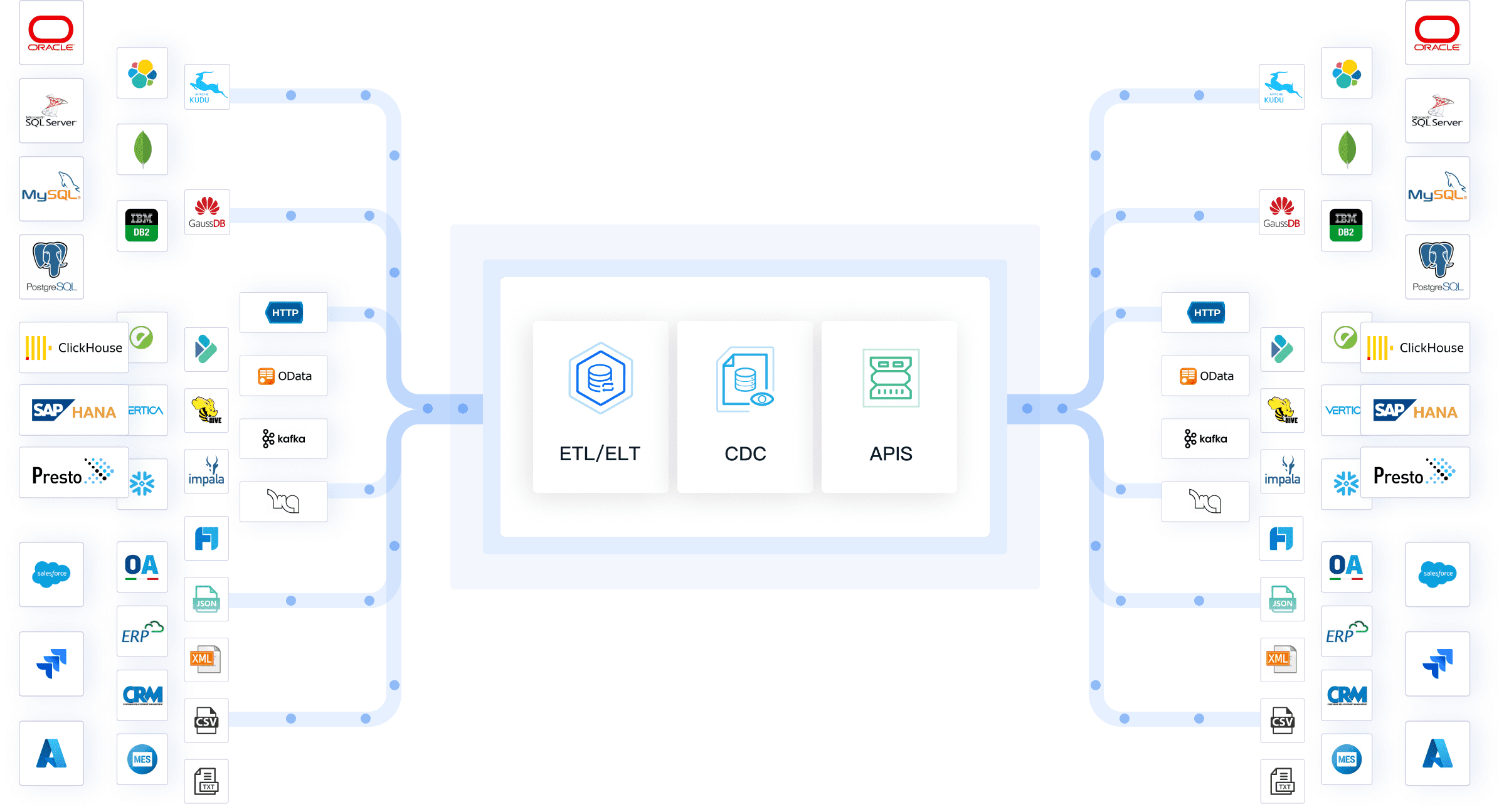
Data Cleansing and Validation
You can improve data quality by adopting best practices for data cleansing and validation. Start by defining clear metrics for data quality, such as accuracy and completeness. Use automated tools to identify and correct inaccuracies in your datasets. Automated data validation software acts as a gatekeeper, checking data against predefined rules and standards. This process prevents errors from spreading and ensures that your asset management system remains reliable.
| Best Practice | Description |
|---|---|
| Define Metrics | Clearly define metrics for data quality to guide checks. |
| Validate Data | Ensure data meets accuracy and completeness criteria. |
| Input Controls | Use dropdown menus and validation rules for data entry. |
| Consistency Checks | Regularly review data for inconsistencies. |
| Data Cleansing | Identify and correct inaccuracies in datasets to maintain quality. |
| Automated Tools | Use software to flag inconsistencies and errors automatically. |
By implementing these practices, you reduce manual errors and maintain high-quality asset data.
Building Data Stewardship
Building a culture of data stewardship ensures that your asset data remains accurate and reliable. You should choose individuals with domain expertise and strong communication skills to serve as data stewards. Assign stewards to specific data domains and provide them with comprehensive training. Establish clear guidelines for data handling, including standards for data entry and validation techniques.
- Choose the right individuals with domain expertise and commitment to data ethics.
- Assign stewards to specific data domains and define ownership boundaries.
- Provide training on tools, policies, and soft skills.
- Set clear guidelines for data entry, maintenance, and validation.
Data stewardship improves the usability and accessibility of your data. It also fosters collaboration and accountability, which are essential for overcoming the challenges of bad data enterprise asset management.
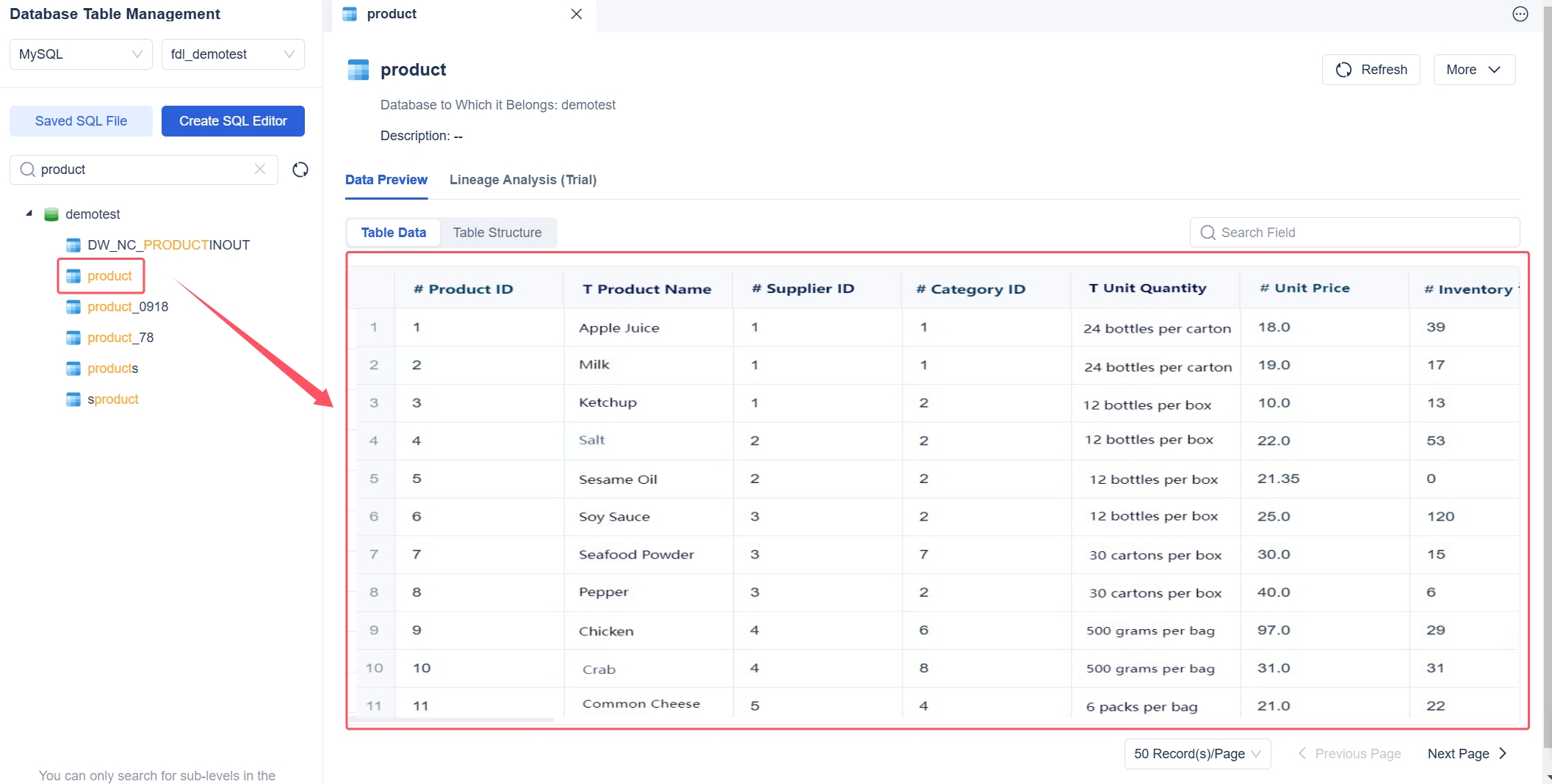
Bad data enterprise asset management systems directly cause failures in asset management. You see poor data integrity lead to ill-informed decisions and profit losses. Data silos create unreliable projections and missed opportunities. Organizations that prioritize data quality outperform others in financial, operational, and compliance metrics.
| Benefit | Description |
|---|---|
| Operational Efficiency | Faster reporting and decision-making |
| Compliance | Reduced risk of penalties |
| Competitive Advantage | Actionable insights for growth |
You can achieve better outcomes by adopting solutions like FineDataLink, integrating data management into workflows, and building strong governance frameworks. Prioritize data quality to optimize asset performance and ensure long-term success.
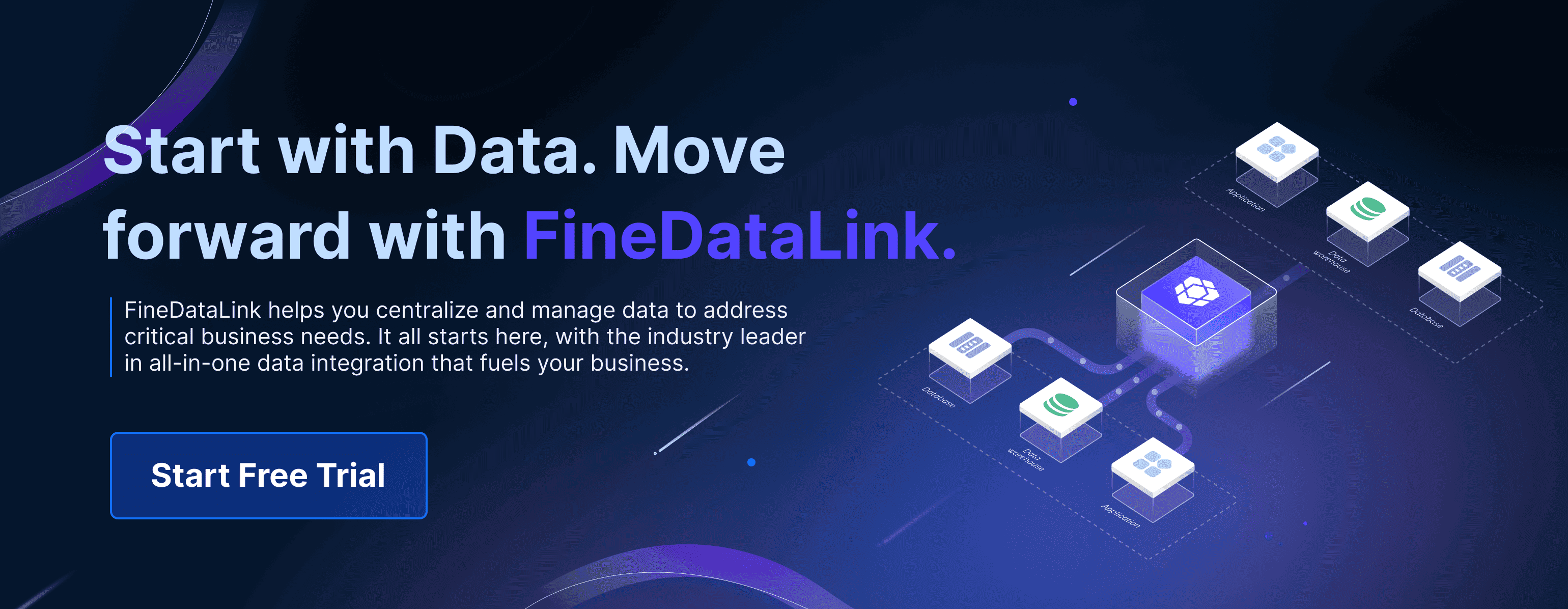
Continue Reading About Bad Data Enterprise Asset Management
Enterprise Data Integration: A Comprehensive Guide
What is enterprise data and why does it matter for organizations
Understanding Enterprise Data Centers in 2025
Enterprise Data Analytics Explained for Modern Businesses
FAQ

The Author
Howard
Data Management Engineer & Data Research Expert at FanRuan
Related Articles
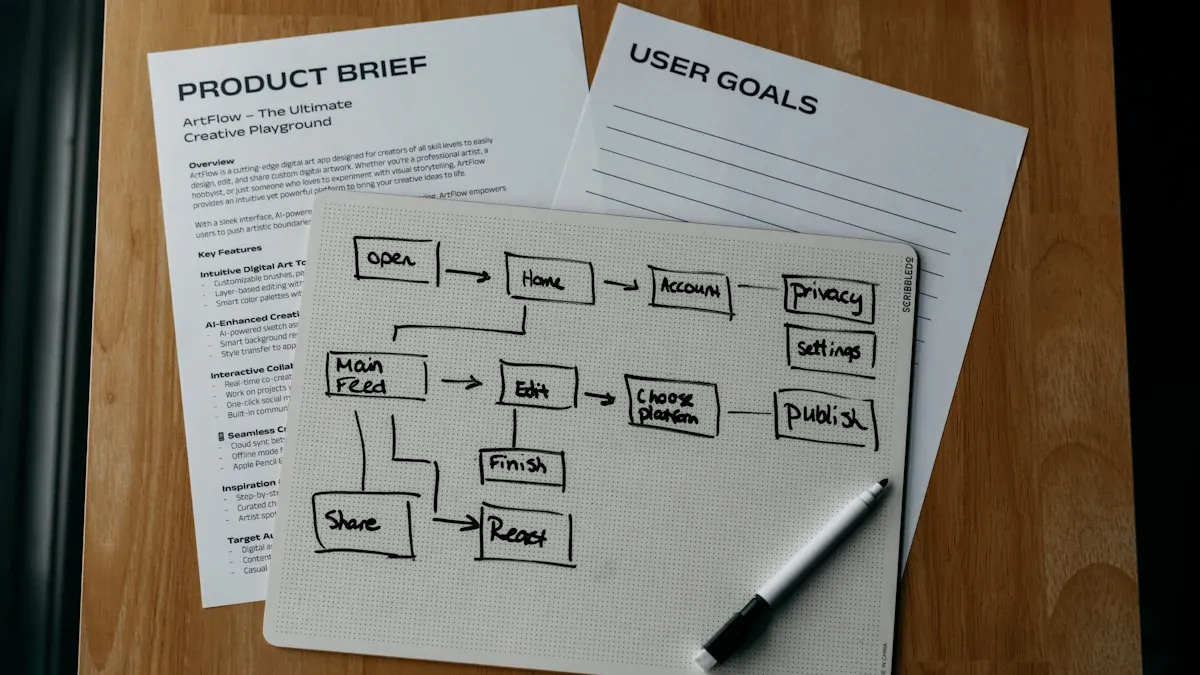
What is a data management platform in 2025
A data management platform in 2025 centralizes, organizes, and activates business data, enabling smarter decisions and real-time insights across industries.
Howard
Dec 22, 2025

Top 10 Database Management Tools for 2025
See the top 10 database management tools for 2025, comparing features, security, and scalability to help you choose the right solution for your business.
Howard
Dec 17, 2025

Best Data Lake Vendors For Enterprise Needs
Compare top data lake vendors for enterprise needs. See which platforms offer the best scalability, integration, and security for your business.
Howard
Dec 07, 2025



